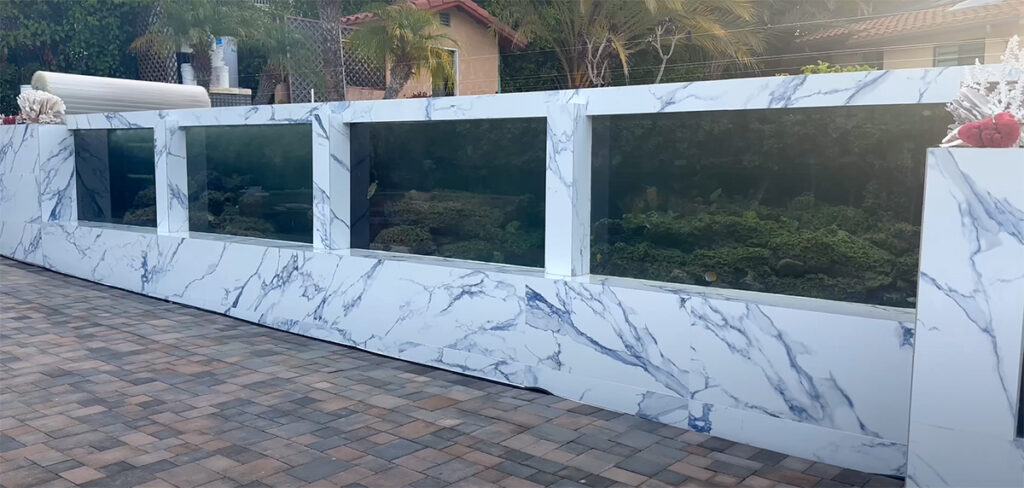
Steve’s Backyard Ocean, located in southern California, continues to create buzz. Since it first came to our attention a couple of weeks ago, two additional videos have been released.
This massive, 13,000-gallon (49,200-L) outdoor reef aquarium took about a year to construct and has been running since June of 2024. It was 99% constructed solely by the owner, except for hiring out concrete pouring and constructing the cinderblock back and side walls. Of course, we raised some questions right away after seeing the first video, some of which we found were already answered “in the comments. ” Others are now being addressed in the latest videos released on the Backyard Ocean YouTube Channel.
Some key points? 10,000 lbs (5 tons, or approximately 4,500 K) of dry Marco Rock, plus additional well-established live rock, were used in the construction of the tank, and form the backbone of the biological filtration for the system. A DIY 600-gallon surge device adds randomized flow to otherwise linear, constant flow provided within the tank. RO/DI and kalkwasser are used for top-off, and a small 90-watt UV-sterilizer was installed initially to help control free-living phytoplankton (greenwater). A commercial-scale protein skimmer is utilized, and ozone is added to the system for about 6 hours daily, credited with vastly improving water clarity. Redundant tankless natural-gas water heaters and a remote chiller help regulate the aquarium’s temperature. Monthly ICP tests are implemented, and early on identified elevated levels of tin, which are being addressed through the application of zeolites. Here’s the second installment, and then below, the third!
Watch The Second Installment
Right away, one of the questions we had was, “What happens when it rains?” This open-topped system obviously deals with evaporation, a routine occurrence in any reef system we all know how to address. However, a random deluge of freshwater isn’t normal in our homes, unless the auto-topoff breaks and keeps pumping water in. In this latest video, Steve answers the question with some surprising revelations and addresses how he deals with predatory birds. You might be surprised at the electrical cost of this reef, particularly operating in southern California!
Watch: What Happens When It Rains?
Everyone here at CORAL can’t wait to see how this system evolves! Best of luck and continued success, Steve!





That is fantastic the dedication you have is incredible and skill to build it wish you the best with it . Are there any live corals in it ? Thanks
How do I subscribe to your channel to see future videos
How do you control Cyanobacteria?